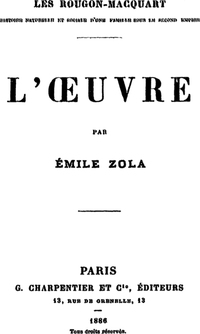#Luvre
L'Œuvre
L'œuvre is the fourteenth novel in the Rougon-Macquart series by Émile Zola. It was first serialized in the periodical Gil Blas beginning in December 1885 before being published in novel form by Charpentier in 1886.The title, translated literally as
Read More..
Ratings
Likes
Reviews
Popularity
Ranks
This #hashtag is not ranked yet.



